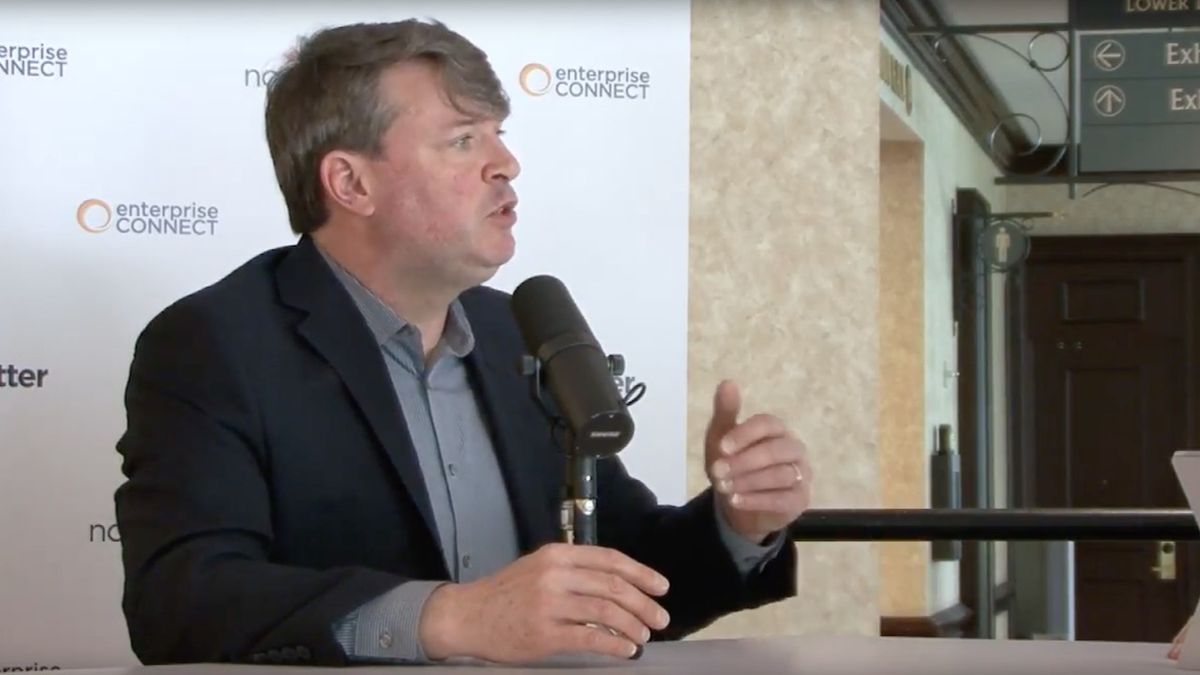Microsoft Teams is like a Siberian Husky puppy: both require rigorous training if they’re to be enjoyed properly. Using this analogy, Kevin Kieller, partner at EnableUC, presented on how to “Tame Teams,” offering advice for getting the most out of the popular unified communications platform.
[Enterprise Connect Virtual Session Talks Strategies for Remote Work, Management]
“You may have heard that Microsoft Teams is not the easiest collaboration tool, and I think that’s partially true, because it is a powerful platform and it’s very feature rich,” Kieller said. To begin maximizing its efficacy, he said you need to have discussions with your team to define and build consensus of your specific objectives related to the platform. “It’s both the documenting and the consensus building that are an important first step in taming teams.”
Setting Objectives
Objectives are crucial, Kieller said, because Teams does a lot of different things. “Some people just see Teams just as a chat tool, others as a collaboration tool, some as a replacement for persistent chat that they’re using with Skype for Business; for others it’s just an online meeting tool, a videoconferencing solution. Perhaps it’s seen as a new phone system, and others see it as a workflow automation platform. And they’re all right.” Depending on the particular use case you have in mind, the responsibility for management can fall on different subgroups of your organization’s IT department.
Outlining Training
Once your objectives are set, the next step is having a proportionate amount of training. “Training with teams plays a much larger role because Teams is always changing and evolving,” Kieller said. Like managing a on-premises Skype for Business deployment, non-technical communications like change management and training should still represent about 50 percent of your Teams skillset. But the remaining 50 percent should be split between technical expertise and analytics. “Analytics is really how you will know what is working for you with Teams and your organization.”
Building Analytics
When it comes to analytics, “the objective is not to simply produce lots of reports; the objective is to provide actionable insights,” Kieller said. There are a number of tools you can use, beginning with Office 365 admin reports. “When you go into the admin center, you can look under reports, and you can get device and user activity. You can also see things like the last activity date for each user.” You can then export the data into Excel for further analysis.
From the Teams Admin center, managers can get more user-focused reports that show things like active users and active channels. “They call them usage reports, but they really provide an opportunity to get an overview of both usage and adoption,” Kieller said. “I define usage as things around quantity, so the number of messages. Adoption is more about people, so it’s things like active users. And generally, when you’re seeing how you’re doing when you’re looking to tame teams, tracking adoption is more valuable than tracking usage.”
Improving Adoption
With an understanding of how the platform is being adopted, you can build training in your organization to produce better results. The need for regular training is especially important as Teams is constantly evolving: 76 new features have been introduced in the last year, 15 are currently rolling out, and 47 more are currently in development.
Kieller gave an example of some tools and tricks many users might not be aware of:
- Real-time transcription display, for when it’s difficult to hear conversations
- Screen sharing from iOS or Android
- Sending emails to a channel
- Recording meetings and searching the transcript
“Training is not one-and-done; it needs to be ongoing,” Kieller said. “I’ve seen organizations do ‘Tuesday Teams Tips,’ as opposed to ‘Taco Tuesdays. Your leadership really needs to model the desired behaviors and participate in the training.”













